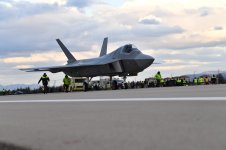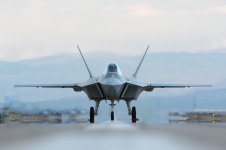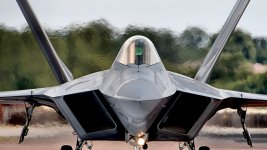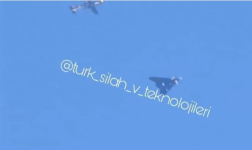PakAl
Senior Member
- Sep 27, 2007
- 5,443
- 6,490
Original post by @DBSPL
In the past few days, well-known analysts and press workers from the Turkish defense industry social media were invited by TAI for a briefing at the facilities. During this facility visit, the MMU and Hürjet production line was visited and a lot of off-the-record information was provided, with the condition that photography was prohibited.
One of these journalists, Tolga Özbek, gave some details on his blog about how the MMU will fly two years earlier. Here is the related news link: https://tolgaozbek.com/yazarlar/tolga-ozbek/mmu-nasil-erken-ucacakasil-erken-ucacak/
***
Some parts from report:
"Normally, the first flight date for the MMU is 2025. In the first phase, the goal is to produce a model close to the 5th generation with AESA radar and stealth design and fly it with American General Electric F110 engines.
The second stage is to produce the first block with approximately 40 F110 engines.
The third stage is to develop a new generation indigenous jet engine to be developed in TR, for which technological assistance will be obtained from abroad, and make it a real 5th generation aircraft.
When this is briefly explained, it is necessary to ask which aircraft will make its first flight at the end of 2023. My interpretation is that it is a basic prototype that will demonstrate the flyability of the concept, where basic flight data will be monitored. After all, all the results of the engineering work, which the TAI team is rightfully proud of, have been verified by computer simulations.
The Critical Design Review (CDR) will be completed and the first MMU will fly at the end of the year. The second MMU with AESA radar and all systems installed will follow in 2025. After that, the target for delivery to air force in 2028 is still valid.
The first step in the MMU is the General Electric F110 engine. These engines are in our country. There was an engine next to the airplane on the production line. On the screen on the table at the entrance of the MMU building, it was seen in the video that the number 2 engine on the right was installed. The other No. 1 engine was being installed in the engine mount of the airplane.
(In response to the question of whether it is really possible to speed up the project), increasing the number of engineers does not actually speed up the project immediately. Acceleration will be possible by taking certain steps to the fore, as TAI has done, in other words, by making the first flight with a basic model.
After all, they are working on a project that is the future of the Turkish Air Force. The steps need to be taken carefully with much thought. The Air Force Command also provides great support to the MMU teams. They are contributing to the creation of the concept through thousands of issues such as missions, capacity, maintenance and pilot training.
I saw the MMU
Block A, MMU production line. It is just behind the MMU Engineering building. In fact, the engineering teams and production lines of all facilities, from helicopters to UAVs, from parts manufacturing to satellites, are side by side. This building was completed at the end of March 2022. Production started immediately in April.
A giant airplane welcomes us inside the building. The MMU is so imposing that it is very different from the mock-up we have seen before.
Unlike the last photo, the aircraft's radome, engines and vertical stabilizer have been dismantled again. More precisely, the team on it is doing a plug and play. I made these notes in my notebook:
It's a huge radome: The radome on the side is incredibly big. It will house a giant AESA radar from ASELSAN. This radar will control all air-air, air-ground, air-sea targets. It will be the pilot's eyes.
Canopy: Ankara-based VOLO is manufacturing the canopy. Not only MMU, but also HÜRKUŞ and HÜRJET canopies are made by VOLO. This canopy is very important in terms of flight safety, both in terms of bird strikes and the canopy breaking apart during launch, and in terms of providing the pilot with optical vision.
Landing gear: The aircraft is on its own landing gear. For example, the nose landing gear is single-wheeled. Previously, this design was double-wheeled in the mock-up. When we asked, the team said, "That was a mock-up, now it is the real design." The landing gear manufactured by TAAC, a joint company of TAI and Altunay, is also beautiful in appearance. By the way, TAAC is also making the landing gear and weapons bay doors for the aircraft.
The engines have arrived: Both TAI and the Air Force are experts in F110 engines. If an agreement is reached, TEI will build 80 or more engines for the 40 aircraft to be produced in Eskişehir.
Fuel tests have started: The aircraft has three main fuel systems. The tests of two of them have been completed. The third is being worked on. Hydraulic tests were to start on the evening of Wednesday, the day of our visit. The system operates at 4500 psi pressure. Limits will be monitored.
MMU consists of four parts: The aircraft consists of four main parts. The front cockpit, center fuselage, wings and tail. The front section is made of 7050 and 77450 series aluminum, titanium in the middle. The outer skin and air intakes are composite.
TAI was painting the parts it produced for the F-35 with robotic systems. In this way, paint could be applied with equal thickness everywhere on the fuselage. This system will also be used for painting the MMU.
Which systems are foreign: The engine (in the first stage), ejection seat (British Martin Baker) and some valve systems are foreign. In other words, localization is around 85 percent.
Will the MMU fly without a pilot: When the pilot faints, for example, the aircraft will be able to land at the nearest square with situational awareness. The goal is to enable the aircraft, which has a fly by wire system, to be flown without a pilot.
Will there be a two-seater model: When we asked Mr. Temel about this, his answer was "No." He said that there is no need for a second seat in this aircraft, and that MMU can do everything itself.
High manufacturing quality
TAI teams have produced an externally clean production. When you look from the outside, the surface of the aircraft and the quality of the parts are clean and sparkling. TAI has been producing parts for world giants for years. It adds engineering to this. It gets patents. The MMU is currently the pinnacle of this work.
Production line
Block A will be the prototype production site. Two airplanes can be manufactured at the same time. In the next step, a facility where 10 airplanes will be produced at the same time will be built next to it. Just nearby, the wind tunnel test center will open in April. You may immediately ask, where were the tests conducted? For the MMU, the world's leading wind tunnel test centers were used. This will be followed by a facility for electro-magnetic testing of the aircraft.
When our visit was completed and I appeared in front of the screen for the live broadcast, I shared this with the viewers. When I looked at the comments, while I conveyed the excitement I was experiencing, the viewers also received it. Everyone was very enthusiastic.
This project started with great excitement. It continues with excitement. Without losing our experienced teams, we need to continue design and production by transferring them to new projects. Because systems in aviation are renewed every 10 years on average. Either they are modernized or the engine is changed, for example. In order to achieve this, we need to work hard and not lose our enthusiasm.
As a result, MMU is the "best answer" to the whole world while after being removed from the F-35. As I always say, MMU is our country's "War of Independence in the Air"
In the past few days, well-known analysts and press workers from the Turkish defense industry social media were invited by TAI for a briefing at the facilities. During this facility visit, the MMU and Hürjet production line was visited and a lot of off-the-record information was provided, with the condition that photography was prohibited.
One of these journalists, Tolga Özbek, gave some details on his blog about how the MMU will fly two years earlier. Here is the related news link: https://tolgaozbek.com/yazarlar/tolga-ozbek/mmu-nasil-erken-ucacakasil-erken-ucacak/
***
Some parts from report:
"Normally, the first flight date for the MMU is 2025. In the first phase, the goal is to produce a model close to the 5th generation with AESA radar and stealth design and fly it with American General Electric F110 engines.
The second stage is to produce the first block with approximately 40 F110 engines.
The third stage is to develop a new generation indigenous jet engine to be developed in TR, for which technological assistance will be obtained from abroad, and make it a real 5th generation aircraft.
When this is briefly explained, it is necessary to ask which aircraft will make its first flight at the end of 2023. My interpretation is that it is a basic prototype that will demonstrate the flyability of the concept, where basic flight data will be monitored. After all, all the results of the engineering work, which the TAI team is rightfully proud of, have been verified by computer simulations.
The Critical Design Review (CDR) will be completed and the first MMU will fly at the end of the year. The second MMU with AESA radar and all systems installed will follow in 2025. After that, the target for delivery to air force in 2028 is still valid.
The first step in the MMU is the General Electric F110 engine. These engines are in our country. There was an engine next to the airplane on the production line. On the screen on the table at the entrance of the MMU building, it was seen in the video that the number 2 engine on the right was installed. The other No. 1 engine was being installed in the engine mount of the airplane.
(In response to the question of whether it is really possible to speed up the project), increasing the number of engineers does not actually speed up the project immediately. Acceleration will be possible by taking certain steps to the fore, as TAI has done, in other words, by making the first flight with a basic model.
After all, they are working on a project that is the future of the Turkish Air Force. The steps need to be taken carefully with much thought. The Air Force Command also provides great support to the MMU teams. They are contributing to the creation of the concept through thousands of issues such as missions, capacity, maintenance and pilot training.
I saw the MMU
Block A, MMU production line. It is just behind the MMU Engineering building. In fact, the engineering teams and production lines of all facilities, from helicopters to UAVs, from parts manufacturing to satellites, are side by side. This building was completed at the end of March 2022. Production started immediately in April.
A giant airplane welcomes us inside the building. The MMU is so imposing that it is very different from the mock-up we have seen before.
Unlike the last photo, the aircraft's radome, engines and vertical stabilizer have been dismantled again. More precisely, the team on it is doing a plug and play. I made these notes in my notebook:
It's a huge radome: The radome on the side is incredibly big. It will house a giant AESA radar from ASELSAN. This radar will control all air-air, air-ground, air-sea targets. It will be the pilot's eyes.
Canopy: Ankara-based VOLO is manufacturing the canopy. Not only MMU, but also HÜRKUŞ and HÜRJET canopies are made by VOLO. This canopy is very important in terms of flight safety, both in terms of bird strikes and the canopy breaking apart during launch, and in terms of providing the pilot with optical vision.
Landing gear: The aircraft is on its own landing gear. For example, the nose landing gear is single-wheeled. Previously, this design was double-wheeled in the mock-up. When we asked, the team said, "That was a mock-up, now it is the real design." The landing gear manufactured by TAAC, a joint company of TAI and Altunay, is also beautiful in appearance. By the way, TAAC is also making the landing gear and weapons bay doors for the aircraft.
The engines have arrived: Both TAI and the Air Force are experts in F110 engines. If an agreement is reached, TEI will build 80 or more engines for the 40 aircraft to be produced in Eskişehir.
Fuel tests have started: The aircraft has three main fuel systems. The tests of two of them have been completed. The third is being worked on. Hydraulic tests were to start on the evening of Wednesday, the day of our visit. The system operates at 4500 psi pressure. Limits will be monitored.
MMU consists of four parts: The aircraft consists of four main parts. The front cockpit, center fuselage, wings and tail. The front section is made of 7050 and 77450 series aluminum, titanium in the middle. The outer skin and air intakes are composite.
TAI was painting the parts it produced for the F-35 with robotic systems. In this way, paint could be applied with equal thickness everywhere on the fuselage. This system will also be used for painting the MMU.
Which systems are foreign: The engine (in the first stage), ejection seat (British Martin Baker) and some valve systems are foreign. In other words, localization is around 85 percent.
Will the MMU fly without a pilot: When the pilot faints, for example, the aircraft will be able to land at the nearest square with situational awareness. The goal is to enable the aircraft, which has a fly by wire system, to be flown without a pilot.
Will there be a two-seater model: When we asked Mr. Temel about this, his answer was "No." He said that there is no need for a second seat in this aircraft, and that MMU can do everything itself.
High manufacturing quality
TAI teams have produced an externally clean production. When you look from the outside, the surface of the aircraft and the quality of the parts are clean and sparkling. TAI has been producing parts for world giants for years. It adds engineering to this. It gets patents. The MMU is currently the pinnacle of this work.
Production line
Block A will be the prototype production site. Two airplanes can be manufactured at the same time. In the next step, a facility where 10 airplanes will be produced at the same time will be built next to it. Just nearby, the wind tunnel test center will open in April. You may immediately ask, where were the tests conducted? For the MMU, the world's leading wind tunnel test centers were used. This will be followed by a facility for electro-magnetic testing of the aircraft.
When our visit was completed and I appeared in front of the screen for the live broadcast, I shared this with the viewers. When I looked at the comments, while I conveyed the excitement I was experiencing, the viewers also received it. Everyone was very enthusiastic.
This project started with great excitement. It continues with excitement. Without losing our experienced teams, we need to continue design and production by transferring them to new projects. Because systems in aviation are renewed every 10 years on average. Either they are modernized or the engine is changed, for example. In order to achieve this, we need to work hard and not lose our enthusiasm.
As a result, MMU is the "best answer" to the whole world while after being removed from the F-35. As I always say, MMU is our country's "War of Independence in the Air"










